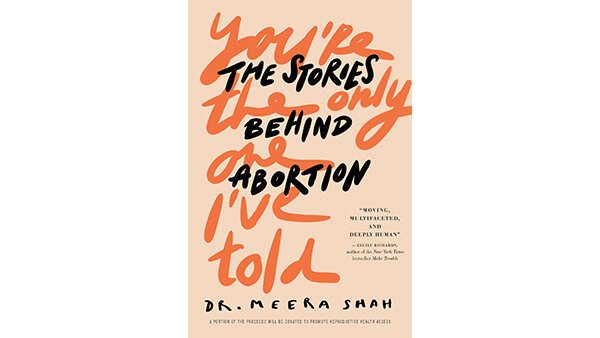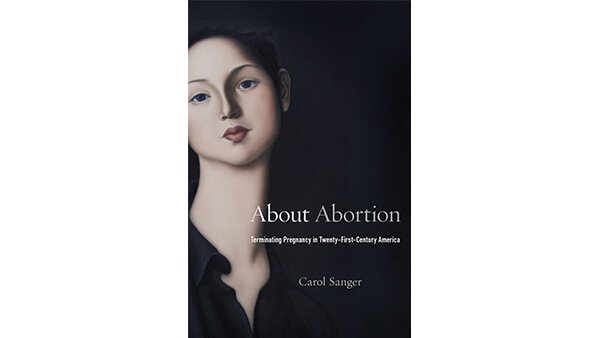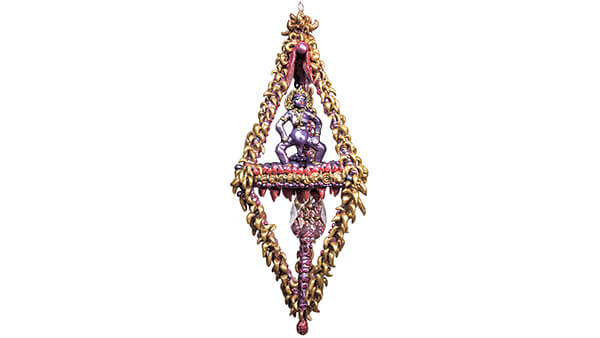“For As Long As Patriarchy Can Shroud Abortion With Silence It Will Continue To Stamp It In Shame”: Mona Eltahawy On Sharing Our Stories To Protect Women’s Rights
After last month’s devastating ruling for women in the US – the first time that the Supreme Court has ever removed a constitutional right, which will undoubtedly have repercussions all over the world – pushing back against the deliberately constructed shame around abortion has never been more important, as Mona Eltahawy writes in this profoundly powerful essay
A few weeks before the pandemic began, I was in a crowded art gallery in New York City, where I live, for an exhibition called Abortion Is Normal. Hanging from the walls and ceilings of the gallery space were paintings, photographs, sculptures and installations that depicted abortion, from the abstract to the individual experience.
The gallery was buzzing with an energy that New York City is famous for but there was something else that mesmerised me that night. I felt as if I were eavesdropping on a sharing circle of people who had had abortions and who were secure in the knowledge that their stories would be received with love and support, and no judgement. If the walls in that gallery could talk, they would have been singing in unison: we hear you, we love you, abortion is normal.
Meanwhile, I felt like a coward.
A few months later, I was asked to write an endorsement in support of Dr Meera Shah’s powerful You’re The Only One I’ve Told: The Stories Behind Abortion, in which she shares the personal narratives of people who have had an abortion but who have rarely – if ever – told anyone. Even though the people who spoke to Dr Shah did not know each other, I loved that she imagined them in a similar community to that of the artists at the exhibition I attended.

“I couldn’t help but think how amazing it would be if these people could all meet each other; if they could share their stories with one another and not just me. I wondered if I could somehow put them all in a room together and show them that they are not alone,” Dr Shah writes in the introduction to her book.
I enthusiastically wrote a blurb for Dr Shah’s book because the narratives are vital and because she is one of the few women of colour doctors I know of who writes openly about providing abortion care.
But still, I felt like a coward.
Why could I enthusiastically share pictures on my social media from the Abortion Is Normal exhibition and encourage people to attend, and yet I still had not publicly shared my own abortion stories? Why could I enthusiastically blurb Dr Shah’s book of abortion narratives, describing it as revolutionary and vital reading, and yet I still had not publicly shared my own abortion stories?
The short answer is that when it comes to abortion, the personal is much more dangerous than the political. The longer answer is, as Carol Sanger writes in About Abortion: Terminating Pregnancy in Twenty-First-Century America, there is a difference between privacy and secrecy.

“What matters is that we recognise and appreciate the important substantive difference between these two modes of concealment when the subject is abortion. Abortion concealment in contemporary society aligns not with privacy but with secrecy. That secrecy is a much darker, more psychologically taxing and socially corrosive phenomenon than privacy,” Sanger says.
Furthermore, “the decision to keep a matter secret in the context of abortion is often a response to the threat or prospect of harm, whether harassment, stigmatisation, or fear of violence.” I had told a handful of friends privately that I had had abortions, but my public silence was a result of the shame that, like a bouncer, stands guard over secrecy and pummels you to succumb to it.
And so it was time to speak.
For as long as patriarchy can shroud abortion with silence it will continue to stamp it in shame. So I finally broke my silence to break free of shame – 25 years after my abortions.
In 1996, I had an ‘illegal’ abortion in Egypt. For breaking the law, I could have been sent to prison for six months to three years. The doctor who performed the procedure could have faced three to 15 years in prison. My then-boyfriend and his cousin could have faced prison time for helping me find a doctor willing to provide abortion care, and for driving me to his clinic to get an abortion.
In 2000, I had a ‘legal’ abortion in Seattle, in the United States. Now that the Supreme Court has overturned the federal protection of abortion by striking down Roe v Wade, pregnant people seeking abortion care in various states across the US could face punishments similar to the ones I did in Egypt.
I use inverted commas around ‘legal’ and ‘illegal’ because I reject the State – and the Supreme Court’s – attempt to tell me what I can and can’t do with my uterus. That control belongs to me. But I also use the inverted commas as a reminder: whether abortion is ‘legal’ or ‘illegal’, the same silence surrounds a medical procedure that is safer than pregnancy. Most people don’t know that. Just as most people don’t realise that they most likely know someone who has had an abortion. Or as the phrase goes: someone you love has had an abortion.
Unless we shatter that silence, unless we vanquish secrecy, we will fail in dragging abortion out of the shadows and into the public discourse as the human right that it is. And abortion opponents will succeed in constraining it with the straitjacket of shame and stigma.
One in every four pregnancies ends in abortion. It is not rare.
One of the reasons I finally shared my abortion stories was that women who look like me rarely see themselves in abortion narratives. Three of the people whose abortion stories Dr Shah shares in her book, like her, come from South Asian families, and one of them, like me, is of Muslim descent. Those three women told Dr Shah that not seeing more women from their ethnic background in abortion narratives made their abortions lonelier and harder.
Another reason I shared my abortion stories was to say what I had long yearned to read: I had an abortion because I did not want to be pregnant. That’s it. In so many of the abortion narratives I read, it was as if women were pleading for a forgiveness that belonged to no one to give; it was as if they had to prove they were ‘worthy’ of the abortion – whether by virtue of the pain they had endured in becoming pregnant (through rape or incest) or the pain they would endure by carrying the pregnancy to term; it was as if they had to prove their abortion was a ‘good’ one because they were ‘good’.
I wanted simply to say, I was not raped. I was not sick. The pregnancies did not threaten my life. I did not already have children. I just did not want to be pregnant. I did not want to have a child. My abortions were not traumatic – rather the silence around them was traumatic. I am glad I had my abortions. They gave me the freedom to live the life I have chosen.
For those whose abortions were indeed traumatic, the secrecy around abortion compounds the difficulty and the sense of isolation at exactly the time when the solace of community is most needed.
The personal is much more dangerous than the political because the former is ruled by the day-to-day tyranny of ‘what will people say?’; a collaboration of social silencing so complete it leaves the most effective state security services envious of its ability to control.
Whether an abortion was a relief or a source of trauma, it is important to liberate it from that tyranny by understanding what underpins abortion bans and, by extension, the secrecy around abortion.
Abortion bans are intent on punishing us for daring to take ownership of our bodies and our sexual desire outside of the norm. They aim to police our bodies and punish us for sex outside of marriage between a man and a woman.
Abortion bans are driven by zealots and puritans – the day-to-day dictators who enforce that tyranny of ‘what will people say?’ What if we stopped hiding? What if we met the tyranny of ‘what will people say?’ with the audacity of visibility?
One of the most striking pieces at the Abortion Is Normal exhibition was Jaishri Abichandani’s installation The Diamond At The Meeting Of My Thighs. It stopped me in my tracks and demanded that I circumnavigate it, take it all in, and appreciate its beautiful audacity. Inside a diamond-shaped structure, a goddess-like figure is birthing a child, and when you look closer, you see she has also birthed numerous eggs as well.

“I made it after my third abortion at the age of 47. Even though I had had two before and committed to one child, it wasn’t an easy decision because in my heart I longed for a girl,” Abichandani told me. “My friend Imani helped me release that desire to another Yoniverse where my daughter could exist without facing any violence. I channelled that into the work. She’s birthing a child but there are so many eggs at her feet that she won’t birth as children but as art.”
As Abichandani shared the inspiration behind her installation with me, I could feel a longing within me stir: stop hiding, it whispered to me. What if I spoke as openly as Abichandani about my abortions? And if I did, could I pass on the inspiration that Abichandani instilled in me like a baton to others stymied by secrecy around their abortions?
I accepted the dare to myself, and I spoke.
**
For Mona Eltahawy’s list of films, books, and artworks that help to dismantle the shame around abortion and provide powerful narratives in support of abortion rights, check out our social media pages.
Mona Eltahawy is the author of The Seven Necessary Sins For Women And Girls And Headscarves and Hymens: Why The Middle East Needs A Sexual Revolution, and is the founder of the newsletter FEMINIST GIANT




